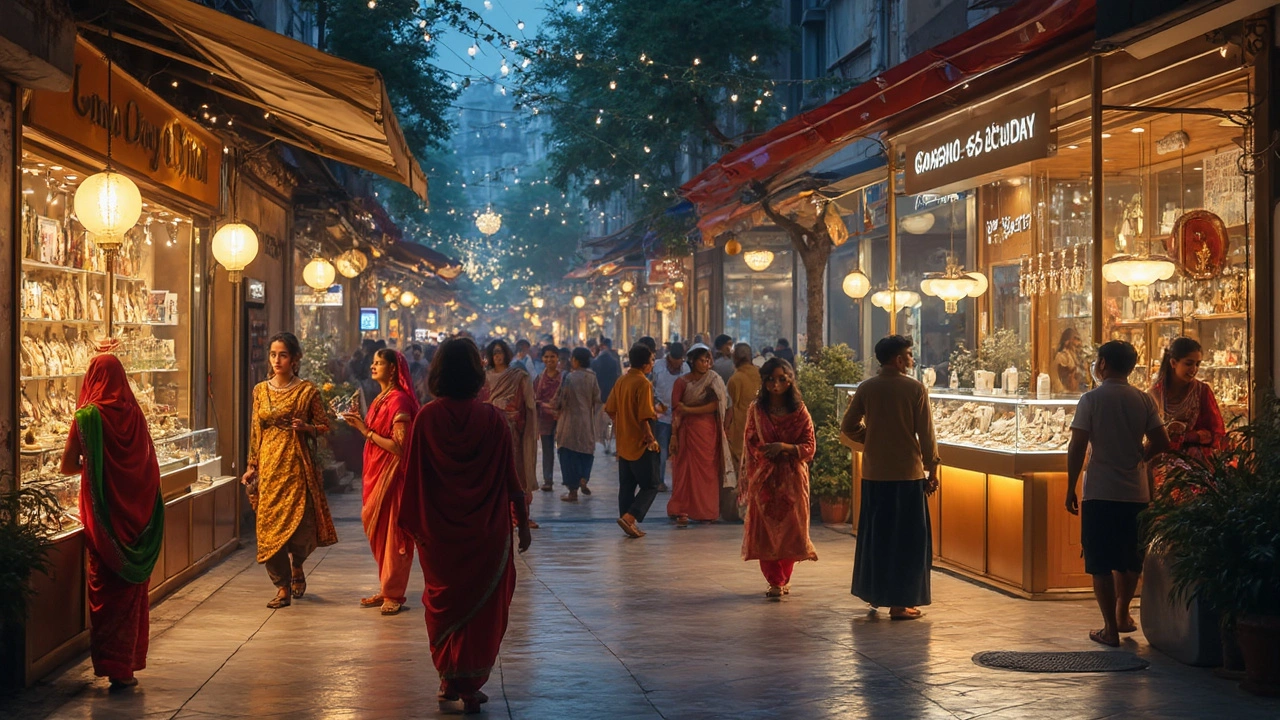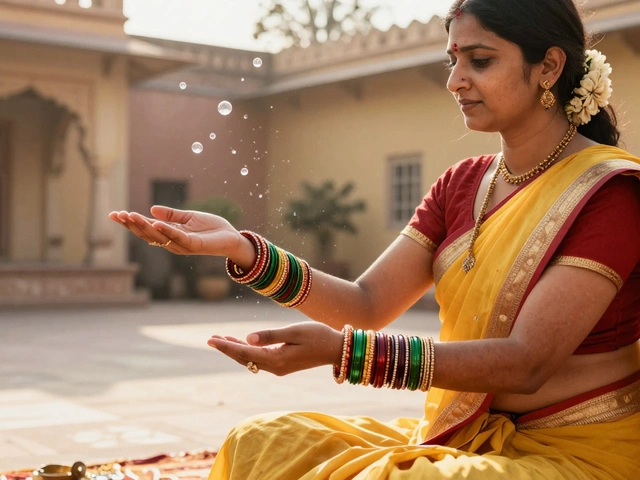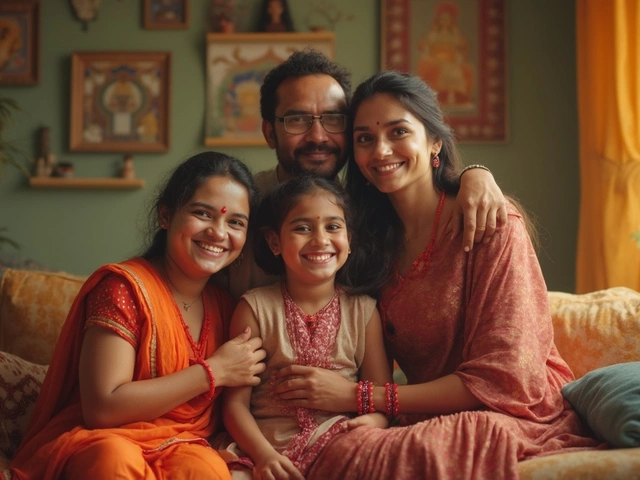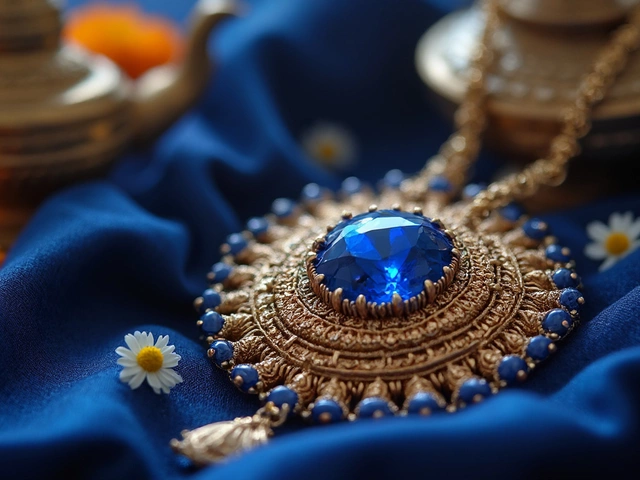If you’ve ever thought about buying a diamond, you’ve probably heard all kinds of stories. Some folks swear diamonds are dirt cheap in India, others say you can scoop up deals in the USA. Here’s the real kicker: the price difference is not as straightforward as you’d think. The world’s biggest diamond markets are both complex and fiercely competitive, but factors like import duties, quality grading standards, brands, and plain old marketing play massive roles that most people never really notice. I’ve watched people Google for hours or quiz every relative who travels abroad, only to end up more confused than when they started. Here’s the inside scoop, so you don’t fall for shiny myths or waste money that could have gone to that Vegas vacation—or, in my case, to a weekend trip with Kavita and the kids.
The Price Battle: Diamonds in the USA vs India
Let’s get down to it. Official stats from 2025 actually show the average diamond ring costs about $6,500 in the USA—that’s data from The Knot’s annual jewelry report. In India, the price for a similar quality, 1-carat certified diamond ring from a well-known retailer? As of June 2025, it’s around INR 350,000 (roughly $4,200, considering a USD-INR conversion rate of 1 USD = 83 INR). Sounds like a huge gap. But wait, there’s more to this than meets the eye.
Diamonds are traded globally in US dollars. The two big centers for raw diamonds are Antwerp and Surat. Both the USA and India import finished diamonds, though India actually cuts and polishes over 90% of the world’s diamonds—yep, that small town of Surat, Gujarat polishes so many that if you’re wearing a diamond ring, there’s a 9 in 10 chance it touched Indian soil. Yet, when it comes to buying for personal use, prices aren’t just about wholesale versus retail.
Here’s where things get spicy. India puts about 5% import customs duty on loose diamonds and a stunning 15% on finished diamond jewelry. Meanwhile, the US imposes only about 2.5% on loose stones and barely anything on finished jewelry. The kicker? India’s domestic taxes (like GST at 3%) and intense competition among thousands of family jewelers keep markups surprisingly lean—especially if you know how to bargain. In America, you’re paying higher labor costs, stricter certification, and often, flashier branding. When you add credit card fees, sales tax (up to 8% in some states), and retail markups, the sticker price might jump more than you expect.
There’s also the question of certification. American buyers love their GIA or AGS certificates—those paper reports mean your diamond’s cut, clarity, color, and carat are exactly as promised. In India, most urban jewelers now offer GIA or IGI certificates, but smaller stores often push local lab certificates, which can (not always, but sometimes) inflate the quality grades. You could end up with a diamond that looks great under the shop lights but isn’t as valuable on the resale market.
| Country | Avg. 1ct Diamond Ring Price (2025) | Import Duty | Tax on Retail | Certification |
|---|---|---|---|---|
| USA | $6,500 | 2.5% (loose stones) | 0-8% (sales tax) | GIA, AGS (strict) |
| India | INR 350,000 (~$4,200) | 5%-15% | 3% GST | GIA, IGI, Local Labs |
The bottom line? If you go apples-to-apples on top-quality, certified stones, you’ll usually find diamonds a tad cheaper in India, but only if you’re careful about where you buy and you know how to bargain. In the USA, you’re paying for peace of mind, stricter grading, and convenience—but that security comes at a price.

Buying Diamonds: Dealing with Quality, Value, and Complexity
Here’s the first mistake most people make: assuming every 1-carat diamond is the same. Not even close. Diamond pricing relies on the Four Cs—cut, color, clarity, and carat. But here’s the twist: a top-notch, D-color, flawless (IF), hearts-and-arrows cut, 1-carat diamond can cost more than double a J-color, SI2 clarity, fair cut, same weight. So, when comparing the USA and India, you have to look at the quality first. Don’t be fooled by Instagram “deals” on huge stones. If the stone is cheap, odds are something’s off—either the grading is loose or the stone has inclusions that you just can’t see until you take it into sunlight.
What about cheating? If you have nightmares about getting scammed, you’re not paranoid. Diamond swapping is rare at big retailers but is not unheard of in tiny family-run stores anywhere in the world. Kavita always double-checks each diamond under a jeweler’s loupe before she even thinks of buying—she’s the real hawk in the family. A GIA or IGI certificate helps a bit, but you still want to check the certificate number laser-etched onto the girdle of the diamond itself—a tiny inscription you can see with magnification. Not all Indian or American shops will proactively point this out, but most reputable jewelers are happy to show you.
Now, when it comes to value, Indian jewelers are famous for negotiating. If you go before Diwali or Akshaya Tritiya, expect higher demand and therefore higher prices, but lean months (June-July) can give you that rare 10% drop if you catch the right store manager on a good day. In the USA, unless you’re buying from a private wholesaler or off Fifth Avenue, the discounts are your standard seasonal promotions—Black Friday, Valentine’s Day, or the occasional store closing sale. Still, don’t be shy. Kavita loves price-matching contests at the mall. Once, she got an extra 12% just for being persistent and saying she saw a better deal online.
- Look for visible inclusions with a loupe, not just a certificate.
- Always check if the certificate number matches the girdle inscription.
- Ask for a breakdown of the price (diamond, setting, tax, certification fee).
- In India, never buy without some solid bargaining (start at least 15% below sticker price).
- In the USA, see if they price match or offer financing options at 0%.
- Buy off-season whenever possible—prices dip when demand is low.
And let’s talk about diamonds as investments. Here’s a painful truth: diamonds are not laptops that you can flip for more money next year. In both countries, selling a diamond means you’ll get 20-40% less than retail, sometimes worse. Don’t fall for the "it’ll appreciate faster than gold" pitch. Diamonds are emotional assets, not financial ones. Buy them for love, not for profit—Pari’s eyes sparkled the day she played with my mother’s old diamond ring, and that’s worth more than any fluctuating price chart.
If you want to skip all the headaches, both the USA and India now have strong online marketplaces. Bluenile, James Allen, and Brilliant Earth dominate the American scene, offering certified stones at transparent prices. India’s CaratLane, Tanishq, and Malabar are tough competitors, with online catalogs, virtual try-on, and even home demo options in bigger cities. These online giants usually slash middlemen costs and stick to transparent certified pricing. Still, nothing beats seeing the stone in real life—diamonds have depth and fire you just can’t judge from a photo.
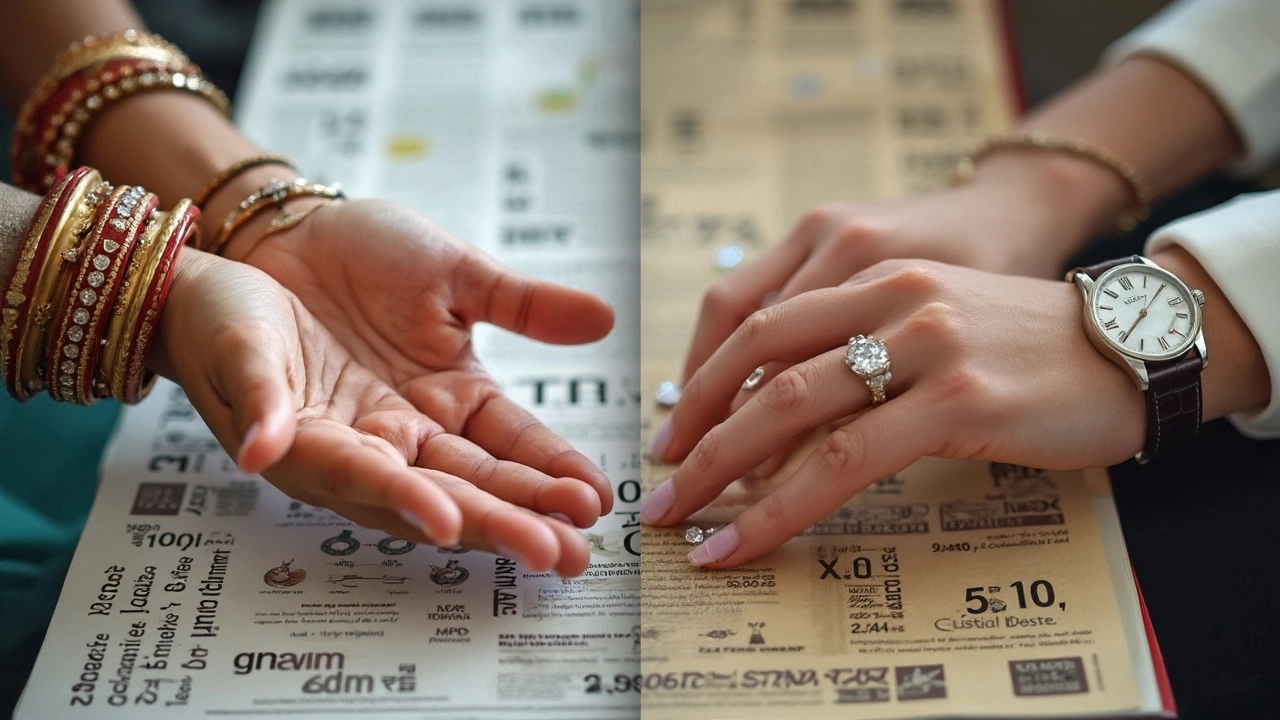
Practical Tips and Insider Secrets for Diamond Shoppers
Let’s be real, buying a diamond is more nerve-wracking than picking the next Netflix series to binge. The stakes are high, the money’s real, and you want every rupee or dollar to count. Here are secrets I’ve picked up through the years, both from my own shopping and from countless tales swapped over chai with relatives and friends:
- Know the currency impact. The dollar-rupee rate swings can eat up any price difference. If you’re wiring money or swiping foreign credit cards, banks tack on 2-3% in extra fees. Once, when Kavita’s cousin bought a diamond in Mumbai using a US card, he ended up paying nearly the same as in Chicago—thanks to bad exchange rates and extra card charges.
- Don’t ignore the resale market. American diamonds with GIA/AGS report fetch more on the secondary market, even in India. In India, regional designers (say, a Hyderabad Nizami-styled necklace) hold emotional value, but international resale value still depends on the stone’s paper trail.
- Look for hallmarking. In India, always insist on BIS hallmark for gold setting—tons of shops still cut corners. In the US, reputable brands stamp every piece, but if you’re buying secondhand, ask for purity tests.
- Consider the style you want. American settings tend to be modern—think solitaire, halo, pave. Indian tastes lean toward intricate, multi-stone, or vintage mughal-inspired settings. That choice alone can shift the final price up or down by 20%.
- If you want to buy for investment, go with high-grade, 1-2 carat, D-F color, VS1-IF clarity with GIA or IGI report. Anything lower is harder to resell or might not fetch much above gold value later. Still, don’t expect stock market returns.
- Compare apples to apples, not apples to mangoes. Use the same specs when shopping in both countries—same carat, cut, clarity, certification. Otherwise, you’re making the classic newbie mistake and playing into the jeweler’s hands.
- Go for smaller city or family-run jewelers in India if you want better bargains, but only with references. Chains are safer but less flexible on prices.
- Never let anyone talk you into a bigger diamond if the overall quality drops. Kavita once nearly picked a 1.5-carat stone at a jaw-dropping price—till the jeweler whispered it had a black inclusion she “just wouldn’t notice once set.” That’s code for “run for your life.”
- Think about insurance. In the US, add the diamond to your home insurance—especially in big cities where jewelry theft rates rise every year. In India, banks and large insurers have special jewelry covers now too.
- And don’t forget the customs challenge. If you’re thinking of buying a stone abroad and bringing it home, each country has strict limits on how much jewelry you can bring back duty-free. Customs officers in Mumbai and Delhi airports are extra-attentive these days. Go over the limit, you might lose your shiny prize or pay a fat fine right on the spot.
So, is the USA cheaper for diamonds—or is India the better buy? Strictly on price, India can beat the USA, especially for natural, certified stones, thanks to lower retail margins and the massive size of its market. But factor in certification, style, after-sales service, and total convenience, and the gap narrows fast. Don’t make a decision based on price tags alone—think about trust, long-term value, and, yes, the sparkle in your partner’s eyes when you finally pop that box open.
At the end of the day, diamonds aren’t just sparkly investments—they’re stories. Each one reminds you of a moment you wanted to remember forever. Whether you’re shopping in New York, Mumbai, or somewhere online at midnight while the kids are asleep, make sure you fall in love with what you’re buying. That feeling? Absolutely priceless.
